
It really *is* easy to migrate your data from MySQL to SingleStore. This blog recaps the recent SingleStore technical webinar, “Modernizing from First-Generation Systems: Migrating from MySQL,” delivered by SingleStore VP of Client Technical Services Sukki S. Sandhar and Pankaj Singh, Solutions Consultant at POC Factory. Here’s a snapshot of the webinar’s step-by-step walk-through of the ‘how’ and ‘why’ of migrating from MySQL to SingleStore.
Just Hit the ‘Easy’ Button: Migrating to SingleStore from MySQL
Domenic Ravita
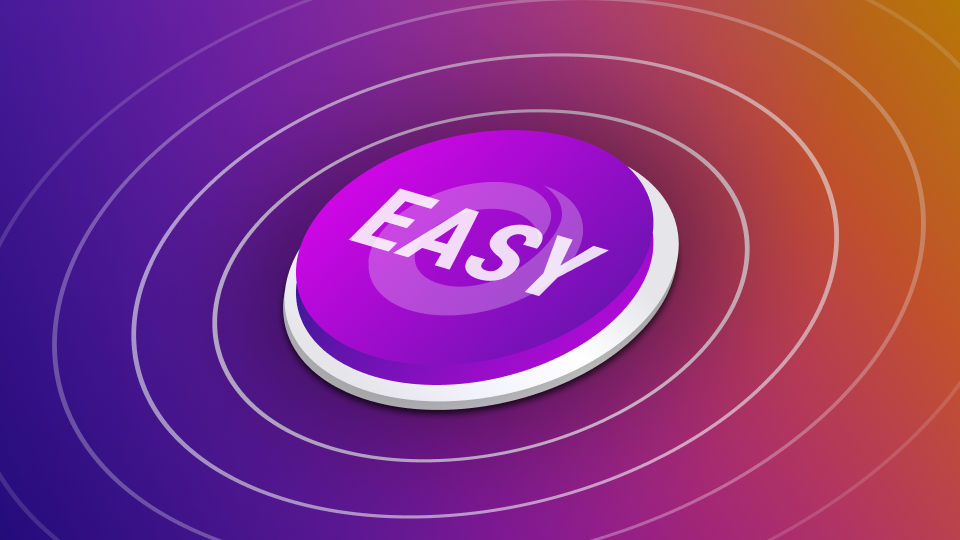
It has more staying power than the average meme—the ‘easy’ button was not only immortalized with an article in The New York Times back in 2008, but it still rings true today. Indeed, the ‘easy’ button was an easy analogy to make when SingleStore VP of Client Technical Services Sukki S. Sandhar and Pankaj Singh, Solutions Consultant at POC Factory, recently hosted the SingleStore webinar “Modernizing from First-Generation Systems: Migrating from MySQL.” Here’s a recap of the webinar, a detailed step-by-step walk-through of the ‘how’ and ‘why’ of migrating from MySQL to the bottomless capacity and performance of SingleStore.
How easy is it?
Database migration isn’t just a technical task. It poses inherent business risk, too. SingleStore is designed to de-risk migrations from SQL databases, including MySQL, to provide distributed SQL capabilities, allowing technical organizations to confidently deliver the data that powers every moment of the business day.
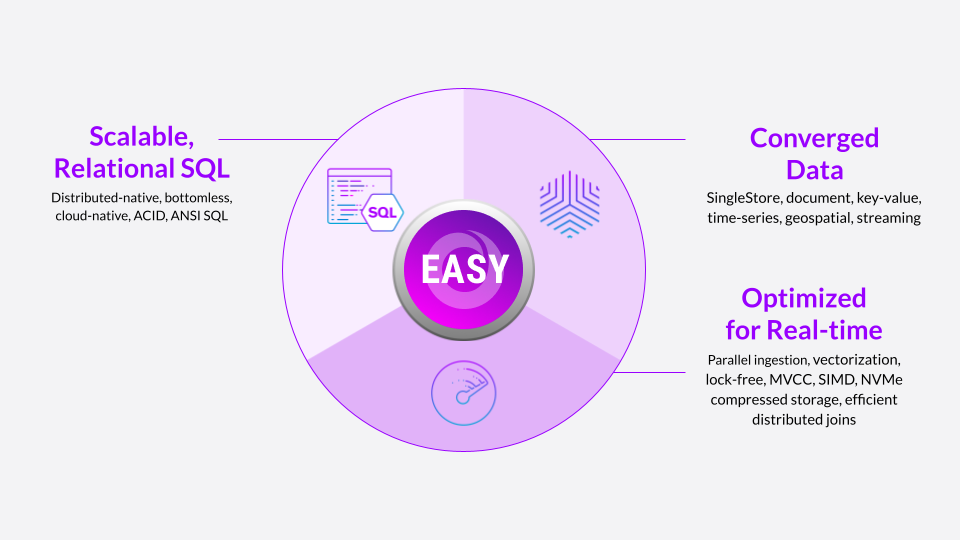
SingleStore uses ANSI-standard SQL syntax, making it automatically a production-ready takeout for MySQL. “We are wire compatible with MySQL and can use all of the MySQL drivers; they are completely usable and compliant with SingleStore,” Sukki said. “We have a 100% match on the data types, as well. The data types in MySQL map to all of the data types we provide inside of SingleStore.”
The migration process is greatly simplified by the fact that a SingleStore instance can be up and running in minutes. “You can go today to the cloud, the managed service provided by SingleStore, and consume some of the free credits we provide to create a database,” Sukki said, continuing, “You can use the guidance and designs we've made available to migrate SQL-style databases into SingleStore. We've made it as easy and as quick as possible.”
The proof is in the demo.
To show how easy MySQL migration to SingleStore is, Pankaj took over and did a demo using a managed service instance from SingleStore, starting at the free trial page.

“Once you are registered, you will be able to create a cluster,” Pankaj directed. “Just fast forward on that step and go back to the cluster overview.” This is on the left side of the screen below, where the cluster name and type are specified.
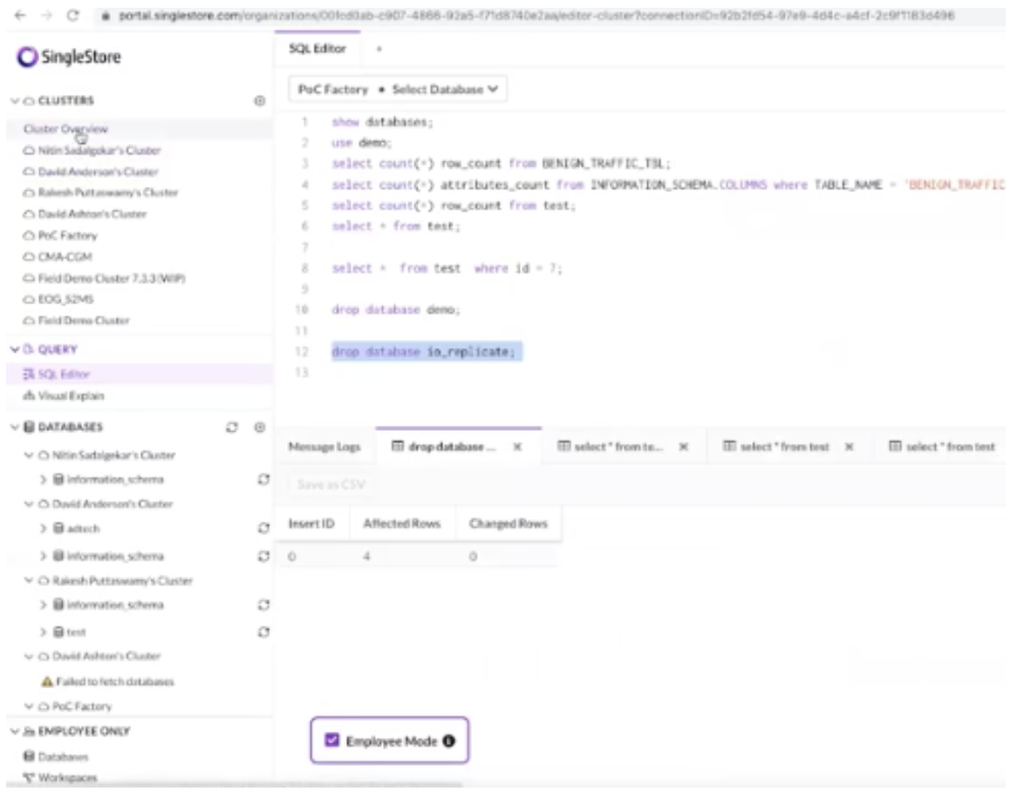
For the demo Pankaj had created a POC Factory cluster, with eight virtual core CPUs and 64 GB of memory. “We have a master aggregator, two child aggregators and two leaf nodes,” he said. He then moved on to the next part of the demo: migrating two tables from a MySQL instance.
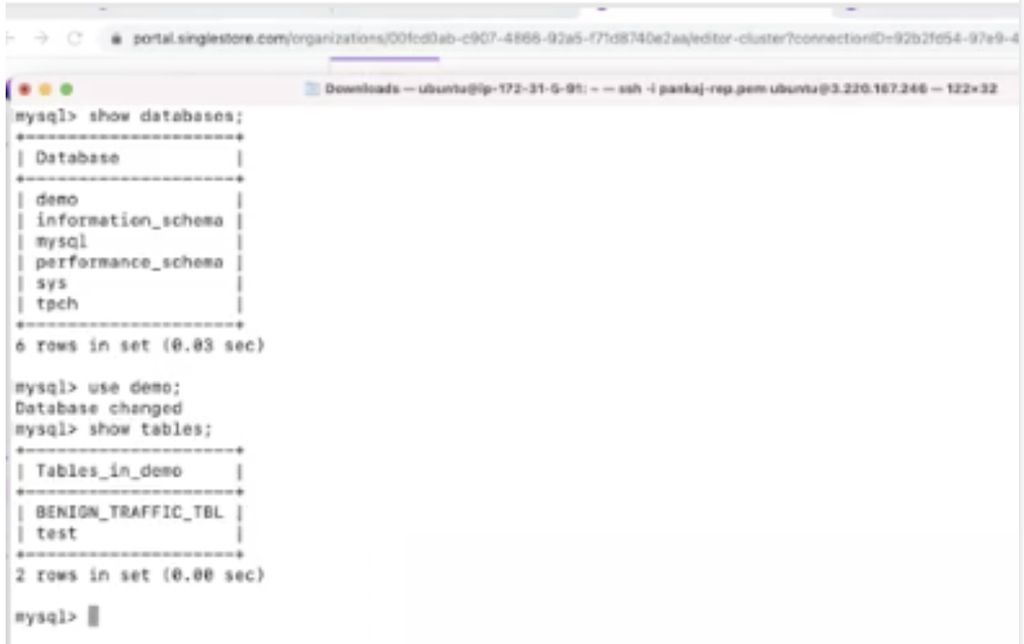
Here, the traffic table contained 116 columns and 10,000 records. The test table contained five records. “This is the table where we will actually perform our DML operations,” Pankaj said. He went to the command-line replicate tool and wrote a replicate command. “Basically we are doing a full load. That means an initial snapshot along with the change data capture.”
After defining the configuration files for the source and target, Pankaj used the default configuration from the extractor side. He narrated: “I'll just press an enter to run this tool. Initially it will communicate with the MySQL database and bring back the information on the metadata, around the tables as well as databases. We should be able to see the results in seconds. We will also see the change data capture; we actually enable the build logs in the MySQL site.”
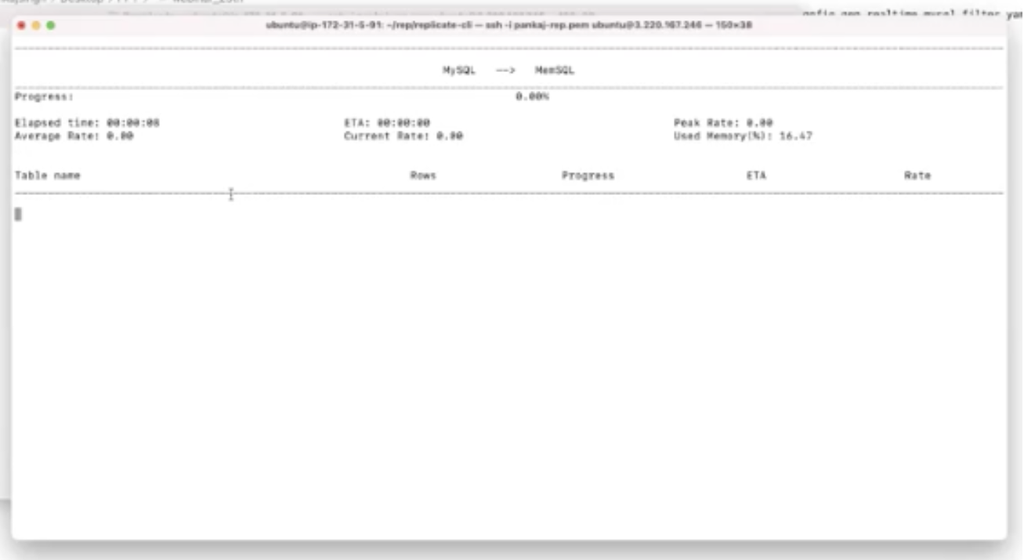
“Meanwhile, let's see what happens in this tunnel. You see the IO replicate and demo databases have been created in the SingleStore end, and in a couple of seconds we should also be able to see the records being pushed.”
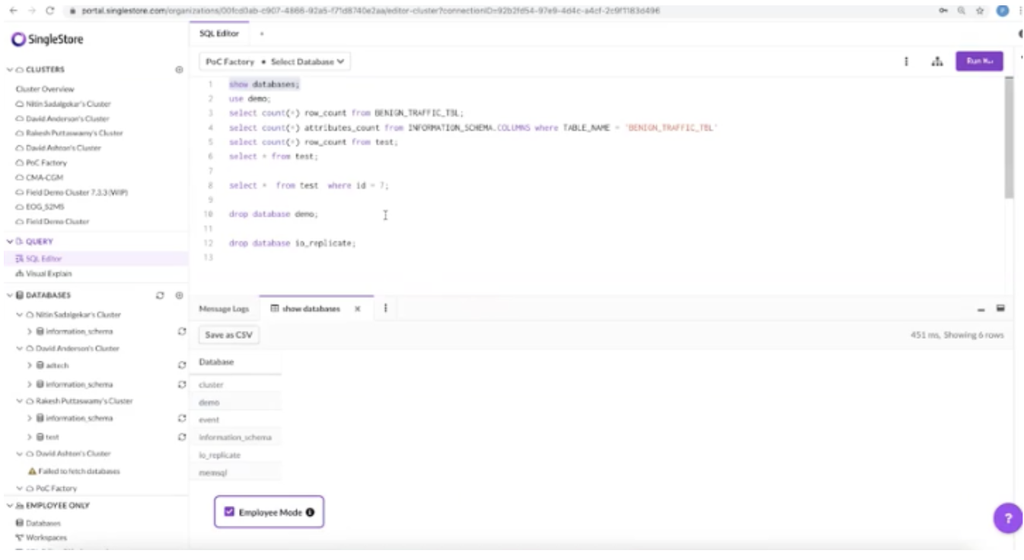
The test table had already been pushed to SingleStore. Pankaj said, “Let's confirm. I'll just click on ‘use demo,’” which verified that the table had 116 columns and 10,000 records. Success! He then ran a few DML operations to insert a new record, correct it and commit it to the database. The new SingleStore database was up, running, and ready to be put to work.
Pankaj summed up, “In this demo, the replicate tool was able to quickly transfer data from MySQL to a SingleStore database in a few milliseconds. A large workload will take more time, but the process is the same: simple and very easy.”
If you are ready to hit the ‘easy’ button, get started with SingleStore today and take advantage of $250 in free product credits. You can catch the full migration webinar here. Keep up with the latest tech updates on SingleStore’s new Twitter channel for developers @SingleStoreDevs.





